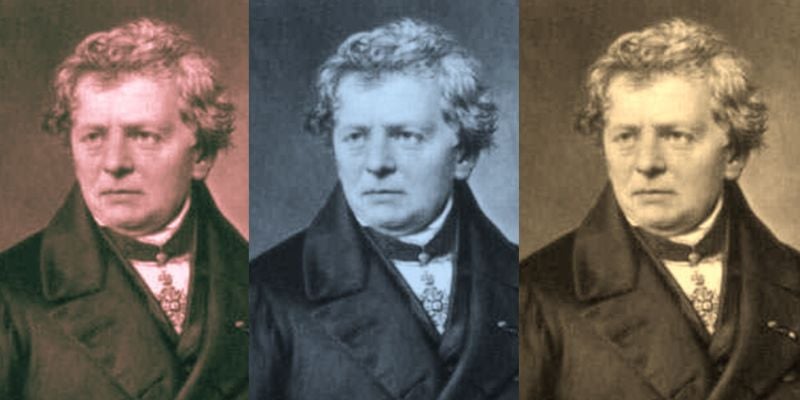Of all the scientists who have studied and built models to elucidate electromagnetism and electric circuits, few can be considered as much of a household name (at least in my household) as Georg Simon Ohm. At a time when electromagnetism was still in its scientific youth, for the relationship between electric voltage and current that is still used today.

Ohm’s law is a fundamental equation used in all forms of electrical engineering and, due to its simplicity, is often the first equation learned by engineering students.
Despite Ohm’s significant scientific contribution, his life story may not be what one would expect. As is the case with many scientists, Ohm’s story consists of many bumps in the road that could’ve undoubtedly prevented the discovery of Ohm’s law. In spite of setbacks, however, Ohm continued to advocate for his work and ultimately formed a foundation upon which the electrical engineering field is still building.
A Strong, Yet Nontraditional Education
was born on March 16th, 1789, in Erlangen, Bavaria (now Erlangen, Germany) to Johann and Maria Ohm. His father, a locksmith by trade, began Georg’s education at a young age, forming a strong scientific foundation in mathematics, physics, chemistry, and philosophy. This level of education was regarded as impressive at the time, especially considering that one’s family station often dictated his level of education. In this regard, a University of Erlangen professor once compared Georg Ohm to members of the Bernoulli family.

Georg Simon Ohm developed Ohm’s law, a fundamental electrical engineering principle that is still used over a century later. Image used courtesy of the
In 1805, at the age of 15, Ohm began studying at the University of Erlangen. However, Ohm found himself focusing less on his studies and more on activities such as during his first months at college. Ohm left Erlangen after three semesters and returned to the university in 1811, where he received a doctorate after four months.
After serving as a mathematics lecturer at several schools and writing an elementary geometry book, Ohm began working as a at the Jesuit Gymnasium of Cologne. It was there that, in pursuit of a university post, Ohm began experiments that would ultimately lead to the publication of Ohm’s law.
Ohm Discovers Profound Fundamental Knowledge
During his time at Cologne, Ohm spent much of his time and experimenting with Oersted’s newly-discovered electromagnetism. During his experiments, he found that the electromagnetic force produced by a wire decreased in an . While today we know that this is due to resistance, at the time, very little was known about materials’ reactions to electric currents and voltage.

Using a compass needle, Ohm found that for differing lengths of wire, the observed deflection changed in a predictable fashion. This ultimately resulted in Ohm’s law. Image used courtesy of
Ohm’s law first appears in The Galvanic Circuit Investigated Mathematically, although in a slightly different form than what we would recognize today since resistance had not yet been well defined. Despite the fact that we now know the importance of Ohm’s work, it was initially not well received due to its heavy reliance on mathematics—something that was uncommon among physicists of the time. Despite this, Ohm continued to develop his work and, in 1841, . He was then inducted into the Royal Society and eventually achieved his lifelong goal of becoming the chair of physics at the University of Munich in 1852.
Generations of Impact
Following Ohm’s death in 1854, Ohm’s law gained more recognition for illuminating the relationship between electric voltage and current in a material, memorializing Georg Ohm in the units for electrical resistance. Today, Ohm’s law is often the first equation that students, hobbyists, or other interested people will learn when beginning their journey into electronics. And while it may not be the most complete model for electrical interactions compared to or quantum mechanics, it is considerably easier to intuitively understand.
Beyond his scientific legacy, Ohm’s story is impressive because of his relentless pursuit of his dreams and scientific discovery. Despite his nontraditional early education, difficulty finding academic jobs, and rejection from the scientific community, Ohm relentlessly advocated for his work and altered the course of electrical engineering education.
